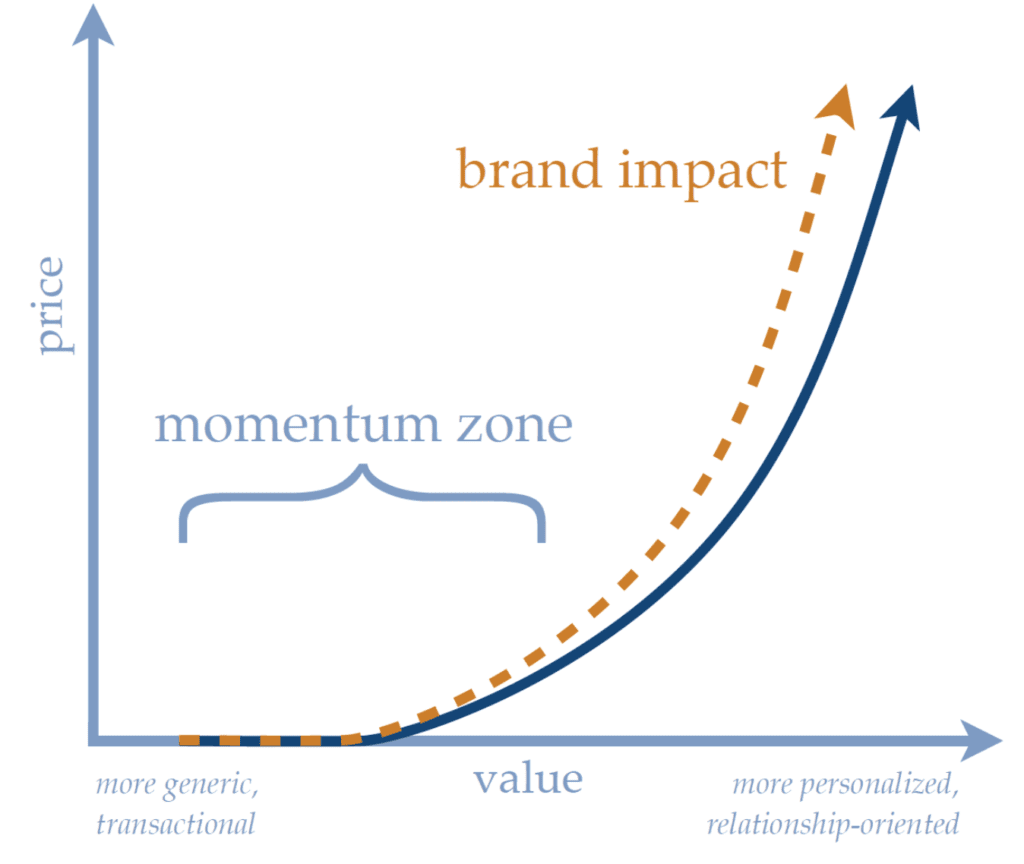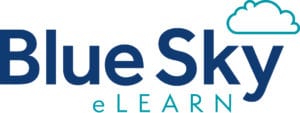Artificial intelligence. It’s one of the biggest issues impacting the world and it’s going to have major implications for learning businesses. The key is making sure you’re tuned in to the topic and prepared for the accompanying changes on the horizon for learners in your particular field or industry.
In this episode of the Leading Learning podcast, Celisa and Jeff discuss how artificial intelligence (AI) is impacting learning businesses across 4 key areas in the customer engagement cycle: employment, marketing, products/services, and evaluation and impact. They also share tips and resources to help learning leaders begin thinking about how to best position themselves to meet the evolving needs of learners.
To tune in, just click below. To make sure you catch all of the future episodes, be sure to subscribe by RSS or on iTunes. And, if you like the podcast, be sure to give it a tweet!
Listen to the Show
Read the Show Notes
[00:18] – A preview of what will be covered in this episode where Celisa and Jeff discuss artificial intelligence (AI) across 4 key areas in the customer engagement cycle: employment, marketing, products/services, and evaluation and impact.
Employment
[01:17] – AI is undeniably changing the employment landscape.
It will eliminate some jobs, change the nature of others significantly, and create new jobs.
This will all impact learning and each of these changes presents learning challenges and opportunities. But note that while there’s going to be an impact, this isn’t going to be uniform—this is an area where you’ll need to dig in and understand your audiences and how they will likely be impacted.
An important point to keep in mind for how AI will impact work is that it doesn’t have to be equivalent to human intelligence—it simply has to be good enough to take over a meaningful set of routine tasks.
And there really aren’t any professions/industries that will be exempt from this, it’s going to impact everybody.
So if you are a learning leader or professional working in the learning business, you need to be tracking news of AI developments in general and consider the implications they might have for your field or industry.
You also need to maintain close relationships with employers as well as with academics and other experts in your field or industry to find out where automation/AI/robotics is likely to disrupt jobs. That way you can be tuned into where that new education and training is going to be needed.
Marketing
[04:51] – AI is changing marketing.
From simple automation algorithms to much deeper forms of personalizing the when, where, and how the prospect intersects with potential learning opportunities. This applies to attracting new prospects, but also ongoing engagement with existing customers.
We’ve said this before but the correspondence between marketing and education is really tight.
You can think of education as a strategy for learning and you can think of marketing as a strategy for buying/owning.
In both cases, the goal is to change knowledge, change behavior, and lead people to that outcome.
Some examples that learning businesses can – and should – embrace, are:
- Ad targeting and re-targeting– this is getting really sophisticated but it’s also really easy. Facebook, for example, now offers the ability to create lookalike audiences—you upload your e-mail list and it uses machine learning to determine other users on Facebook similar to your users – and you can then reach these people through various advertising methods.
Note this is segmentation because AI is helping you identify your audience/sub-audiences and then really develop messaging that’s specific to those really small segments.
[08:36] –
- Content curation – when you’re able to leverage AI for the content curation, you can get hyper specific. You don’t have to curate across the board for all of your members/learners, rather you can get more segmented and personalized so you’re really giving them what they’re interested in or what they need.
Note this all aligns with our concept of the Value Ramp™ (below), which shows that you should provide value early on in the engagement with the prospective learner/customer to then lead them along the path towards the higher value, higher priced offerings that you charge for.

So being able to curate content in that way, as you’re attracting them as a prospect – and then keeping them engaged over time. A simple application of this is newsletters that are being curated through AI.
Rasa.io is an example of this.
[10:36] –
- Dynamic pricing – adjusting price based on prospect behavior and socio-economic demographics. This already happens routinely in the airline industry. People have different opinions about this but it really can help to level the playing field in a lot of ways, particularly if you’re an international organization. We’re likely going to see the e-commerce engines that are driving a lot of the learning platforms utilizing dynamic pricing to get rid of blanket discounts that eat into margins as well as to offer fair and workable pricing.
Below are some additional resources to learn more about some applications of AI:
- 10 Practical Examples Of Artificial Intelligence In Marketing
- 10 Brilliant Examples of AI in Marketing
Product/Service
[12:47] – AI is changing how learning can be delivered, facilitated, and supported.
AI is essential for realizing the promise of personalized learning.
Presenting learners with the right learning experiences and the right elements within those learning experiences, contextualizing learning, and curating related content.
It will be particularly helpful with social and informal learning, which has traditionally been much harder to track and analyze.
Along with AI gaining ground, xAPI is also starting to gain some traction. It allows data to be gathered from outside of a learning management system but AI is the key to helping you know what to do with that data.
It will also be the key to taking that data to figure out what’s next because AI has great potential for follow-up and reinforcement learning.
Note there are now products coming out that have AI baked into them and there are some that are specifically focused on learning design and development—things that are taking content and turning them into quizzes/assessments or that take source materials to create course experiences.
Even if these don’t produce the most exciting version of a quiz or course, the fact that you can get one quickly can be a huge time saver for your design and development team.
Examples of companies who are doing this are:
- Quillionz– uses AI to create assessment and quiz questions based on content you feed it. Check out the related Training Industry article about Quillionz to learn more.
- WildFire– uses AI to create learning content. You provide source materials—text, PowerPoint, or video—and then WildFire generates what it calls “active learning.” Read more about Wildfire and how they won an award as one of the best new learning technologies.
Also note this cuts down on subject matter expert time.
And keep in mind, this is coming fast so you need to be paying attention to it.
Ultimately, you need to be aware of where AI already exists and is playing a role in what you’re doing and then begin to imagine what the impact will be as it further expands and improves.
Sponsor: Blue Sky eLearn
[18:55] – Blue Sky eLearn is the creator of the Path Learning Management System, an award-winning cloud-based learning solution that allows organizations to easily deliver, track, and monetize valuable education and event content online. Blue Sky also provides webinar and webcast services, helping you maximize your content and create deeper engagement with your audience across the world.
Evaluation and Impact
[19:44] – AI is changing our ability to analyze, adapt, and adjust.
The same types of algorithms that are enabling platforms like Facebook and LinkedIn to better analyze and draw conclusions from member behavior will enable learning businesses to analyze the behaviors of their learner at the aggregate level, as well as at the group (e.g., specific demographics, cohorts, etc.) and individual level.
And all of this is going to help develop and deliver better learning products and services by looking at things like the role that facilitators/instructors/presenters are playing.
We’ve talked about that word, “impact” so many times as what we see as an impact imperative—see our related episode, One Word: Impact.
There are so many options now for learners, employers, and other decision makers that increasingly, it’s going to be imperative that you show that you’re learning is having an impact and moving the dial.
An interesting point about the impact of AI on data analysis is that we’re moving more into being able to look at leading indicators versus lagging indicators—so getting more into the predictive view of what’s happening—see our related episode, Predictive Business Analytics with Gary Cokins.
Because AI allows you to look at data as it’s coming in, and at a huge volume as well, you can begin to have insights much earlier on. And AI is even going to get better beyond looking at predictive factors, but also getting to that prescriptive mode.
Sponsor: Authentic Learning Labs
[24:13] – Authentic Learning Labs is an education company seeking to bring complementary tech and services to empower publishers and L&D organizations to help elevate their programs. The company leverages technology like AI, Data Analytics, and advanced embeddable, API-based services to complement existing initiatives, offering capabilities that are typically out of reach for resource-stretched groups or growing programs needing to scale.
Implications
[25:05] – Learner expectations are already shifting significantly regardless of whether they are aware of the role of AI in their lives.
You can’t expect your learners to say “we want artificial intelligence”. You have to look at the how things are shifting in your industry, the behavior of learners and employers/decision makers, and the desired learning outcomes, and then determine what role AI can play.
Also, there is probably a significant first mover advantage.
If you can get the right AI in place around the right content, you will start to build an advantage that it will be difficult for others to erode.
So make sure you’re tuned into AI in general, but also with that specific lens on your learners/industry/profession to think about implications and make those connections so you can be a first mover.
Note we’d love to hear your perspectives related to the topic of artificial intelligence so feel free to comment below or email us at leadinglearning@tagoras.com.
[32:06] – Wrap-Up
If you are getting value from the Leading Learning podcast, be sure to subscribe by RSS or on iTunes and we would be truly grateful, as it helps us get some data on the impact of what we’re doing.
We’d also appreciate if you give us a rating on iTunes by going to https://www.leadinglearning.com/itunes. We personally appreciate your rating and review, but more importantly reviews and ratings play an important role in helping the podcast show up when people search for content on learning and leading.
And please do be sure to visit our sponsors for this quarter. Find out more about Authentic Learning Labs and Blue Sky eLearn.
Finally, consider telling others about the podcast. You can send a tweet by going to leadinglearning.com/share. You can also Like us on Facebook at facebook.com/leadinglifelonglearning and share us with others there. However you do it, please do help to share the good word about the podcast.
[32:04] – Sign off
See Also:





Leave a Reply